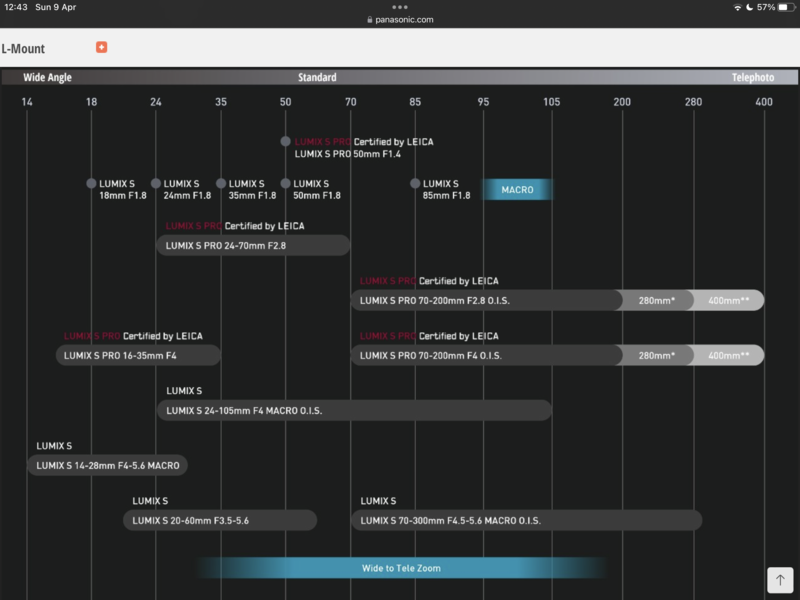pdk42
Moderator
The latest Panasonic lens roadmap shows a planned new zoom in the 24-200 range.

I’m really hoping this is a high quality optic that performs well, rather than a cheapo ”consumer superzoom“ with iffy IQ. I guess only time will tell, but for me, I’d be happy with something like this:
- 24-200 range. I could live with 28-200, or even 24-175.
- Reasonably compact - say like the Nikon 24-200.
- Variable aperture f4-f6.3. I’d prefer a smaller max aperture to a larger & heavier lens.
- OIS (synced with the IBIS of course).
- Really excellent IQ.
- Price under £/$/€ 1200 - but if it performs I’d be happy with a little more - say up to 1500.
What are other people’s thoughts?

I’m really hoping this is a high quality optic that performs well, rather than a cheapo ”consumer superzoom“ with iffy IQ. I guess only time will tell, but for me, I’d be happy with something like this:
- 24-200 range. I could live with 28-200, or even 24-175.
- Reasonably compact - say like the Nikon 24-200.
- Variable aperture f4-f6.3. I’d prefer a smaller max aperture to a larger & heavier lens.
- OIS (synced with the IBIS of course).
- Really excellent IQ.
- Price under £/$/€ 1200 - but if it performs I’d be happy with a little more - say up to 1500.
What are other people’s thoughts?